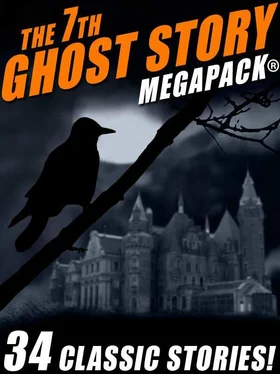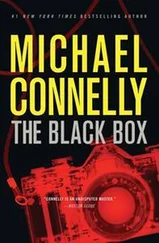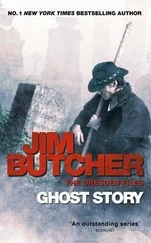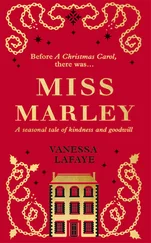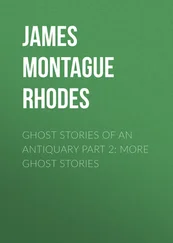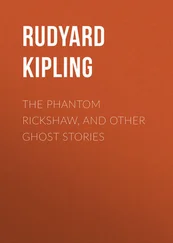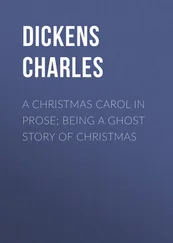“Oh, Tom! he had on such heavy boots and was so dreadfully bold about it,” said Kate, tearfully.
From that time Kate became nervous and refused to be left alone. Tom started whenever a door creaked, and the “treasure” departed hurriedly, saying, “Faith, the house is haunted, sure.”
After that Kate spent her days in “girl hunting,” and her nights in answering shadowy advertisements that never materialized. They tried Irish, English, Dutch, and a “heathen Chinee,” with a sprinkling of “colored ladies” to vary the monotony. They seemed about to become famous throughout the length and breadth of the land as “the family that changes help once a week,” when they landed Treasure No. 2.
Shortly after her advent we were all asked down to W——, to help celebrate their happiness, and incidentally to christen the new dinner set. We were not a little surprised at finding Kate so pale and Tom rather distrait. However, after a delightful dinner, that should have filled with pleasure the most exacting bride, we adjourned to the piazza, leaving the men to the contemplation of their cigars. We were enthusiastic in our praise of the house, and congratulated Kate in securing such a prize, when, to our horror, she burst into tears, and said: “Oh, girls, it’s a dreadful place; it’s haunted!” and then tearfully proceeded with the details, until we all felt creepy and suggested the parlor and lights.
It was not until long afterwards that Kate discovered that Tom had also related the “ghost story” to the men, that evening, to which Ned Harris had said, laconically, “Rats,” and Bob Shaw laughingly remarked, “Tom, old chap, you really shouldn’t take your nightcap so strong.”
About the first of July the climax came. The ghost walked again, this time taking not only the remaining pepper-pot, but also a silver salt-cellar. Evidently he had a penchant for small articles, but unlike former times, everything on the sideboard was in the greatest disorder. Aunt Julia’s salad bowl was found on the floor, and not far away the cheese-dish, with its contents scattered about. This time one of the windows was found half open. A week later a note came to me from Kate, saying that she and Tom had gone to Saratoga to spend the remainder of the season with her mother.
The following spring Tom received a note and parcel from Mr. B——, the owner of the house at W——, which read as follows:
Dear Mr. Howard:
I send you by express three articles of silver, which my wife suggests may belong to you, as they are marked with your initials, namely, two silver pepper-pots and a salt-cellar; they were found, the other day, during the process of spring house cleaning, in a rat hole, behind the sideboard. I forgot to have the holes stopped up last spring, or to caution you against the water rats; the great fellows will get in, you know. Kind regards to Mrs. Howard.
Very truly,
John B——.
The next season the “Ghost Club” was organized, the badge being a small silver rat, bearing proudly aloft a tiny pepper-pot. We thoughtfully offered Tom the presidency, but he declined, with offended dignity, from the effects of which I think he will never fully recover.
THE DEAD WOMAN’S PHOTOGRAPH,
by Anonymous
Taken from Twenty-Five Ghost Stories (1904).
Virgil Hoyt is a photographer’s assistant up at St. Paul, and a man of a good deal of taste. He has been in search of the picturesque all over the West, and hundreds of miles to the north in Canada, and can speak three or four Indian dialects, and put a canoe through the rapids. That is to say, he is a man of an adventurous sort and no dreamer. He can fight well and shoot well and swim well enough to put up a winning race with the Indian boys, and he can sit all day in the saddle and not dream about it at night.
Wherever he goes he uses his camera.
“The world,” Hoyt is in the habit of saying to those who sit with him when he smokes his pipe, “was created in six days to be photographed. Man—and especially woman—was made for the same purpose. Clouds are not made to give moisture, nor trees to cast shade. They were created for the photographer.”
In short, Virgil Hoyt’s view of the world is whimsical, and he doesn’t like to be bothered with anything disagreeable. That is the reason that he loathes and detests going to a house of mourning to photograph a corpse. The horribly bad taste of it offends him partly, and partly he is annoyed at having to shoulder, even for a few moments, a part of someone’s burden of sorrow. He doesn’t like sorrow, and would willingly canoe 500 miles up the cold Canadian rivers to get rid of it. Nevertheless, as assistant photographer, it is often his duty to do this very kind of thing.
Not long ago he was sent for by a rich Jewish family at St. Paul to photograph the mother, who had just died. He was very much put out, but he went. He was taken to the front parlor, where the dead woman lay in her coffin. It was evident that there was some excitement in the household and that a discussion was going on, but Hoyt wasn’t concerned, and so he paid no attention to the matter.
The daughter wanted the coffin turned on end, in order that the corpse might face the camera properly, but Hoyt said he could overcome the recumbent attitude and make it appear that the face was taken in the position it would naturally hold in life, and so they went out and left him alone with the dead.
The face was a strong and positive one, such as may often be seen among Jewish matrons. Hoyt regarded it with some admiration, thinking to himself that she was a woman who had been used to having her own way. There was a strand of hair out of place, and he pushed it back from her brow. A bud lifted its head too high from among the roses on her breast and spoiled the contour of the chin, so he broke it off. He remembered these things later very distinctly and that his hand touched her bare face two or three times.
Then he took the photographs and left the house.
He was very busy at the time and several days elapsed before he was able to develop the plates. He took them from the bath, in which they had lain with a number of others, and went to work upon them. There were three plates, he having taken that number merely as a precaution against any accident. They came up well, but as they developed he became aware of the existence of something in the photograph which had not been apparent to his eye. The mysterious always came under the head of the disagreeable with him, and was therefore to be banished, so he made only a few prints and put the things away out of sight. He hoped that something would intervene to save him from attempting an explanation.
But it is a part of the general perplexity of life that things do not intervene as they ought and when they ought, so one day his employer asked him what had become of those photographs. He tried to evade him, but it was futile, and he got out the finished photographs and showed them to him. The older man sat staring at them a long time.
“Hoyt,” said he, at length, “you’re a young man, and I suppose you have never seen anything like this before. But I have. Not exactly the same thing, but similar phenomena have come my way a number of times since I went into the business, and I want to tell you there are things in heaven and earth not dreamt of—”
“Oh, I know all that tommy-rot,” cried Hoyt, angrily, “but when anything happens I want to know the reason why, and how it is done.”
“All right,” said his employer, “then you might explain why and how the sun rises.”
But he humored the younger man sufficiently to examine with him the bath in which the plates were submerged and the plates themselves. All was as it should be. But the mystery was there and could not be done away with.
Читать дальше
